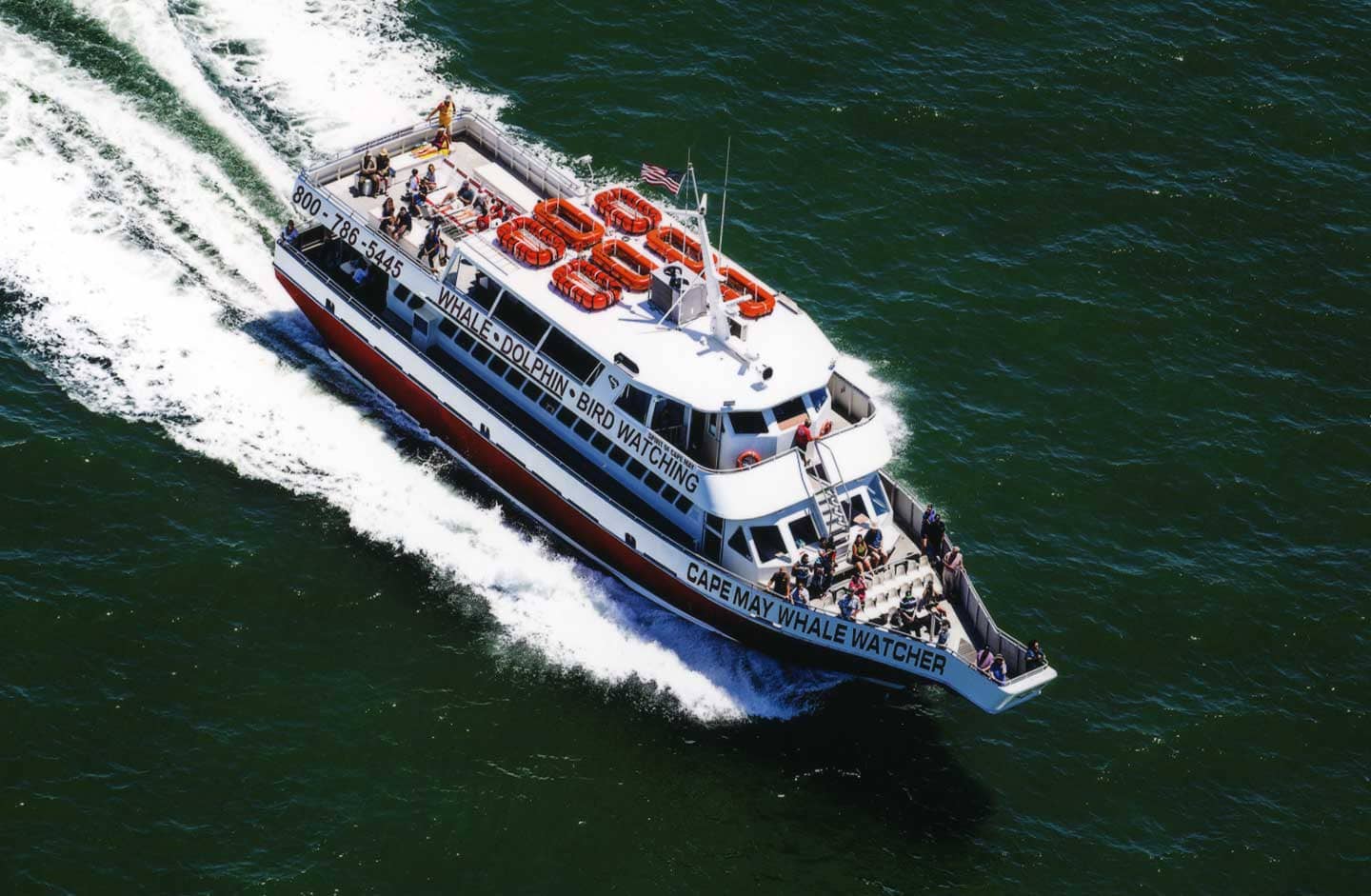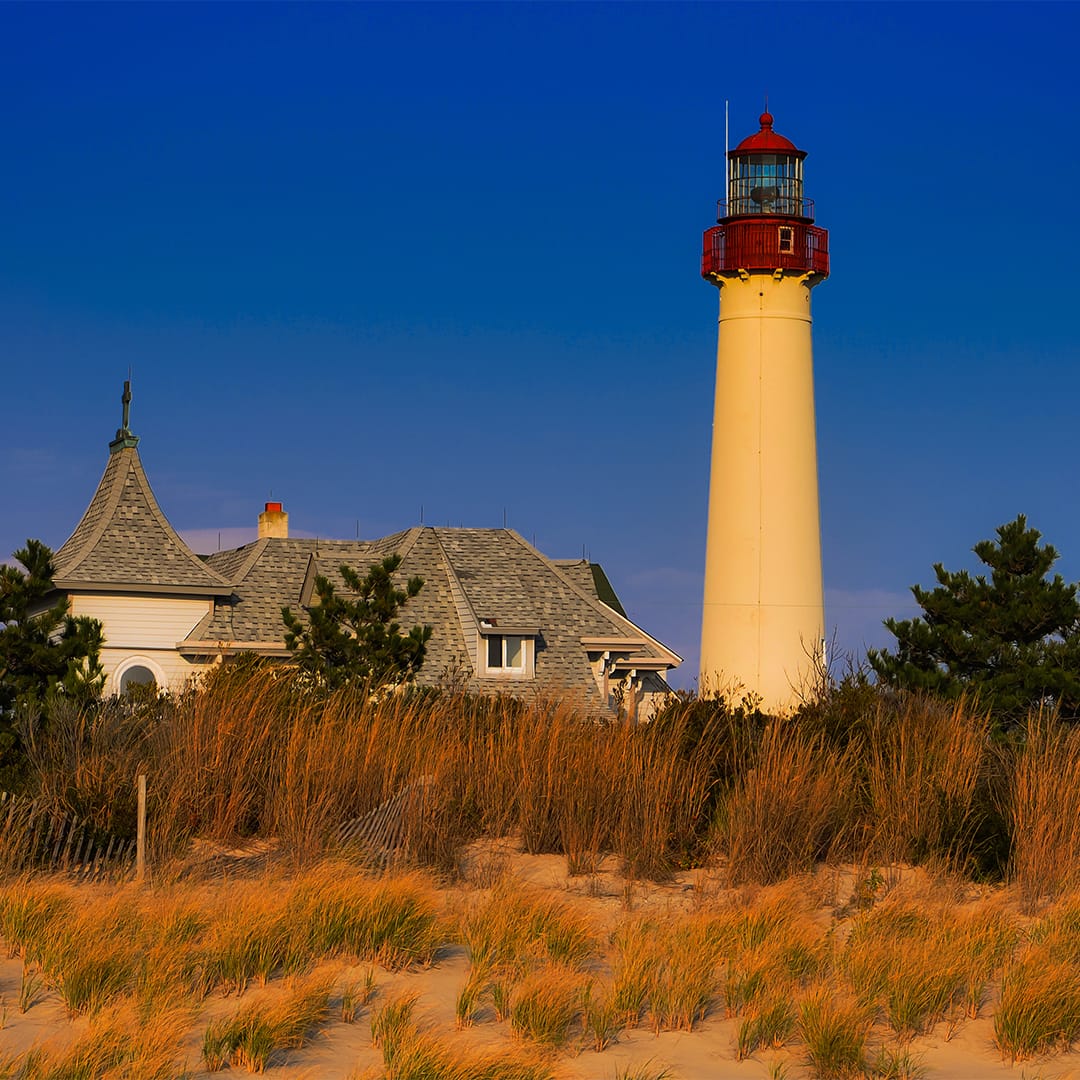
A Brief History Of The Cape May Lighthouses
Cape May, New Jersey is one of the country’s oldest vacation destinations. As the entire city is a designated historic district.
Cape May, New Jersey is one of the country’s oldest vacation destinations. As the entire city is a designated historic district, the area has plenty of historical sights.
On the Cape May Grand Lighthouse Tour, you will get a chance to see some of the historical sites up close. Seven local lighthouses can be viewed during the trip, while our amazing staff gives those onboard a history lesson on each of these beacons.
BRANDYWINE SHOAL
Brandywine Shoal Light is located on the north side of the Delaware Bay and just west of Cape May. The lightship was situated on the shoal in 1823. It is known for being the first screw-pile lighthouse in the U.S., meaning it stands on piles that are screwed into the sandy sea bottom.
Guida di Scommezoid alla Gestione delle Vincite e dei Guadagni nelle Scommesse
Benvenuti alla Guida di Scommezoid alla Gestione delle Vincite e dei Guadagni nelle Scommesse! Se sei un appassionato di scommesse sportive, saprai quanto sia emozionante ottenere una vittoria. Tuttavia, gestire le vincite e i guadagni in modo efficace è altrettanto importante per garantire un successo duraturo e sostenibile nel mondo delle scommesse. In questo articolo, esploreremo strategie e consigli pratici per gestire in modo intelligente le tue vincite, massimizzando i profitti e minimizzando i rischi.
Scoprirai come stabilire un bilancio adeguato per le scommesse, gestire le vincite in modo responsabile e pianificare il futuro delle tue entrate derivanti dalle scommesse. Attraverso approfondimenti dettagliati e suggerimenti pratici, ti guideremo nel processo di gestione delle vincite in modo efficace e professionale. Che tu sia un principiante o un veterano nel mondo delle scommesse, questa guida ti fornirà le conoscenze e le competenze necessarie per massimizzare il tuo successo e goderti appieno l'emozione di scommettere in modo responsabile e consapevole.
Strategie vincenti per gestire le vincite nelle scommesse
La Guida di Scommezoid alla Gestione delle Vincite e dei Guadagni nelle Scommesse offre preziosi consigli per i giocatori che desiderano massimizzare i loro guadagni e gestire in modo efficace le proprie vincite. Per evitare rischi e perdite e ottimizzare i profitti, è fondamentale seguire una strategia oculata e disciplinata.
Una delle chiavi per il successo è selezionare accuratamente dove scommettere online in Italia. È essenziale scegliere bookmaker affidabili e legali che offrano quote competitive e una vasta gamma di opzioni di scommessa. In questo modo, si può sfruttare al meglio le proprie vincite e assicurarsi una piacevole esperienza di gioco.
Infine, è consigliabile impostare dei limiti di puntata e di budget per evitare di cadere nella trappola del gioco d'azzardo e mantenere il controllo sulle proprie finanze. Seguendo attentamente i consigli della Guida di Scommezoid, i giocatori possono godere appieno delle loro vincite e guadagni, mantenendo sempre il divertimento e la responsabilità al centro delle proprie scommesse.
Massimizzare i guadagni: consigli pratici per i giocatori di Scommezoid
Una corretta gestione delle vincite e dei guadagni nelle scommesse è fondamentale per chiunque voglia avere successo nel mondo del betting. Scommezoid ha preparato una guida dettagliata per aiutarti a massimizzare i tuoi profitti e minimizzare le possibili perdite. La disciplina e il controllo sono le chiavi per mantenere un bilancio sano e duraturo nel tempo.
Prima di tutto, è essenziale stabilire un budget mensile da dedicare alle scommesse e rispettarlo scrupolosamente. Suddividi il tuo capitale in base alle tue disponibilità economiche e non superare mai le cifre prefissate, anche in caso di serie fortunate. Inoltre, è consigliabile tenere traccia di tutte le tue giocate, registrando vincite e perdite per avere una visione chiara della tua situazione finanziaria nel betting.
Infine, impara a gestire le tue emozioni durante le scommesse. Evita di lasciarti trascinare dall'euforia delle vittorie o dalla frustrazione delle sconfitte. Mantieni sempre la calma e prendi decisioni razionali basate su analisi e strategie ben ponderate. Seguendo queste linee guida, potrai migliorare il tuo approccio alla gestione delle vincite e dei guadagni nelle scommesse con Scommezoid.
Gestione responsabile delle vincite: principi e linee guida
La guida di Scommezoid alla gestione delle vincite e dei guadagni nelle scommesse è un prezioso strumento per chi desidera massimizzare i propri profitti nel mondo delle scommesse sportive. Innanzitutto, si consiglia di stabilire un budget mensile dedicato alle scommesse, in modo da evitare di spendere più di quanto ci si possa permettere. È fondamentale anche tenere traccia di tutte le scommesse effettuate e dei relativi risultati per valutare l'efficacia delle proprie strategie.
Per gestire al meglio le vincite, è consigliabile reinvestire una parte dei profitti ottenuti per aumentare gradualmente il proprio capitale. Inoltre, è importante essere disciplinati e non lasciarsi trascinare dalle emozioni nel momento di vincita, ma continuare a seguire un piano ben definito. Seguendo i consigli di questa guida, è possibile ottenere risultati più consistenti e duraturi nel mondo delle scommesse sportive.
Analisi dei rischi e delle opportunità nel mondo delle scommesse
Se sei un appassionato di scommesse, la gestione delle vincite e dei guadagni è fondamentale per mantenere un equilibrio finanziario sano. La Guida di Scommezoid ti aiuterà a massimizzare i profitti e a evitare rischi eccessivi. Una corretta gestione delle vincite ti permetterà di godere appieno dell'emozione del gioco senza compromettere la tua situazione economica.
Prima di tutto, è essenziale stabilire un budget mensile per le tue scommesse. Definisci un importo che puoi permetterti di perdere senza compromettere le tue finanze personali. Rispetta sempre questo budget e non cercare di recuperare le perdite con scommesse più rischiose. La disciplina è la chiave per una gestione efficace delle vincite e dei guadagni.
Inoltre, è consigliabile diversificare le tue scommesse per ridurre il rischio complessivo. Non puntare sempre sullo stesso tipo di evento o sport. Sperimenta nuove strategie e approcci per aumentare le tue possibilità di successo. La varietà ti permetterà di ampliare le tue conoscenze e di ottenere risultati più consistenti nel lungo termine.
Infine, ricorda di prelevare regolarmente una parte delle tue vincite. Non reinvestire tutti i guadagni nelle scommesse, ma metti da parte una percentuale per eventuali emergenze o per altri obiettivi finanziari. Con una gestione oculata delle vincite, potrai godere appieno dell'esperienza delle scommesse senza compromettere la tua stabilità economica.
Approfondimento sulle tattiche vincenti per un successo duraturo
La Guida di Scommezoid alla Gestione delle Vincite e dei Guadagni nelle Scommesse offre preziosi consigli per gestire in modo efficiente i profitti ottenuti dalle scommesse sportive. Uno dei suggerimenti principali è quello di stabilire un budget fisso per le scommesse e rispettarlo rigorosamente, evitando così di incorrere in perdite eccessive. Inoltre, si consiglia di reinvestire con saggezza le vincite, utilizzandone una parte per scommettere e conservandone un'altra per eventuali emergenze o investimenti futuri.
Un altro aspetto fondamentale della gestione delle vincite è la disciplina nell'organizzare le scommesse in base a strategie ben definite. Scommezoid suggerisce di evitare le puntate impulsiva e di seguire un piano di gioco razionale, basato su analisi approfondite e informazioni accurate. Inoltre, è importante monitorare costantemente le proprie scommesse e adattare la strategia in base ai risultati ottenuti, al fine di massimizzare i profitti nel lungo termine.
Infine, la Guida di Scommezoid sottolinea l'importanza di mantenere la calma e la lucidità mentale durante le scommesse, evitando di lasciarsi trascinare dalle emozioni e mantenendo sempre un approccio razionale e obiettivo. Seguendo i consigli forniti da questa guida, è possibile gestire in modo efficace le vincite e i guadagni derivanti dalle scommesse sportive, creando così un ambiente di gioco più responsabile e gratificante.
Congratulazioni per aver completato la lettura della nostra guida sulla gestione delle vincite e dei guadagni nelle scommesse! Speriamo che i consigli e le strategie condivisi ti siano stati utili per massimizzare i tuoi profitti e gestire in modo responsabile le tue entrate. Ricorda sempre l'importanza di disciplina e controllo nel mondo delle scommesse per mantenere un approccio sano e profittevole. Continua a informarti e a migliorare le tue capacità per un'esperienza di scommessa più gratificante e di successo. Buona fortuna e buone scommesse!
FOURTEEN FOOT BANK LIGHT
The 14-foot bank light is located just northwest of Cape May and was constructed in 1886. The lighthouse is 40 feet tall and at the top of the base is a house-like structure. The structure was created for two keepers who would manage a makeshift beacon during the winter of 1885.
MIAH MAULL SHOAL
Located on the north side of the Delaware Bay and just off Cumberland County, New Jersey, this is the last offshore lighthouse erected in Delaware Bay. The light was first constructed in 1913 and is a caisson style, which means its structure rests on a concrete foundation.
CROSSLEDGE SHOAL
The Crossledge Shoal was constructed in 1875 and sits atop a hexagonal base. Atop the lighthouse was a two-story dwelling that served as the living quarters for those manning the light. Ice in the Delaware Bay often caused damage, however, didn’t lead to its demise. It was the construction of the Miah Maull Shoal and Elbow of Crossledge that led to the lighthouse being discontinued just 35 years after it was built.
ELBOW OF CROSSLEDGE
The Elbow of Crossledge was built to replace the Crossledge Shoal in 1910. The lightship was popular when it first opened and many visitors went to visit the station. In 1951, a terrible storm caused serious damage, which led to the lighthouse becoming automated. Just two years later, the lighthouse was struck by the S.S. Steel Apprentice which toppled two-thirds of the lighthouse and damaged the caisson. A skeleton tower was later built on the remaining caisson.
SHIP JOHN SHOAL
This lighthouse’s name comes from a 1797 incident in which the ship “John” ran aground while on the way to Pennsylvania. Although passengers and cargo escaped unscathed, the vessel was completely lost. In 1877, the lighthouse was completed despite some setbacks during the construction process. In order to protect the lighthouse from ice, several piles of loose stones that formed as a foundation for a breakwater were placed around the shoal light.
CAPE MAY LIGHTHOUSE
The Cape May lighthouse was first lit in 1859 and eventually automated in 1946. The tower is 157 feet tall and there are 217 steps from the ground to the top. Since being open to the public after restoration efforts in 1988, more than 2 million people have climbed to the top. In 1994, the lighthouse was restored to its historic coloring of light beige with a red top.






